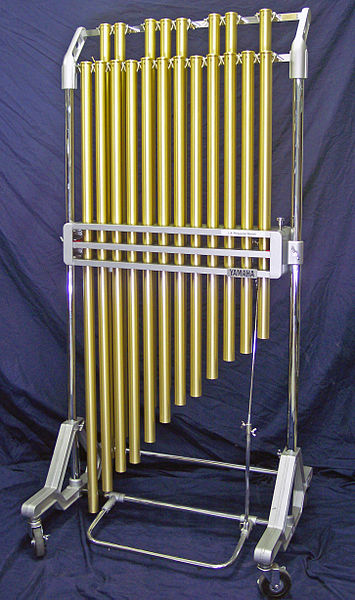Chimes

Family
Percussion
Description
With a name that means, “the hitting of one body against another,” instruments in the percussion family are played by being struck, shaken, or scraped. In the orchestra, the percussion section provides a variety of rhythms, textures and tone colors. Percussion instruments are classified as tuned or untuned. Tuned instruments play specific pitches or notes, just like the woodwind, brass and string instruments. Untuned instruments produce a sound with an indefinite pitch, like the sound of a hand knocking on a door. The percussion instruments are an international family, with ancestors from the Middle East, Asia, Africa, the Americas and Europe representing musical styles from many different cultures.
Chimes are a tuned instrument consisting of a set of 12 to 18 metal tubes hung from a metal frame. The metal tubes range from 1 to 2 ½ inches in diameter and from 4 to 6 feet in length. The chimes, or tubular bells, are struck with a mallet and sound like church bells when played. The longer the length of tube that is struck, the lower the pitch that is created.